Tue., Mar. 7, 2006
The graded Experiment #2 reports were
returned in class today. You are allowed to revise these
reports. The revised reports will be due on Tue., Mar. 21.
Please return the original report when you turn in a revised report.
Optional Assignment #3 was returned. You'll find answers online. Answers to the Surprise Optional
Assignment are also available online.
A photocopied version of the Quiz #2 Study
Guide was handed out in class.
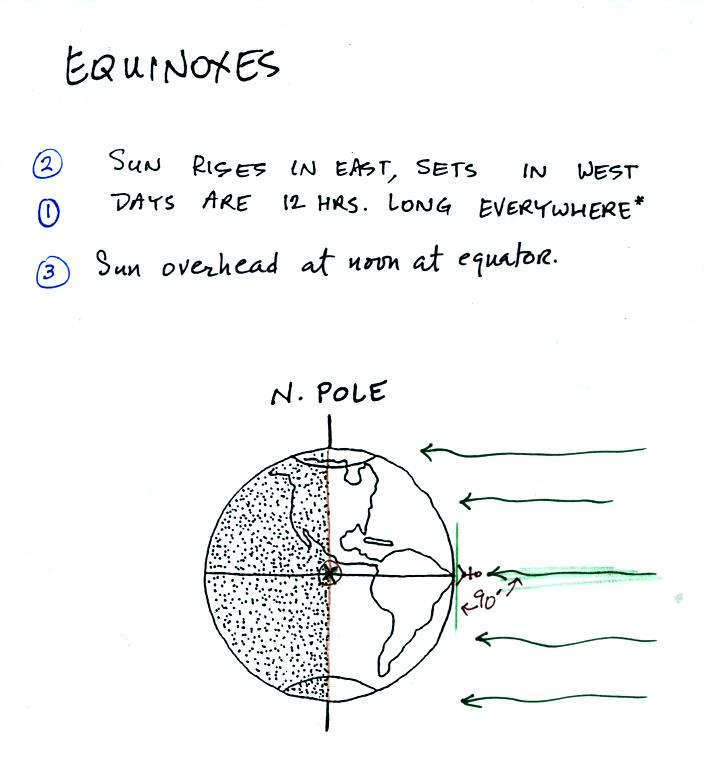
A quick review of three of the main characteristics of the
equinoxes. One of our goals today will be to see how these change
on the summer and winter solstices.
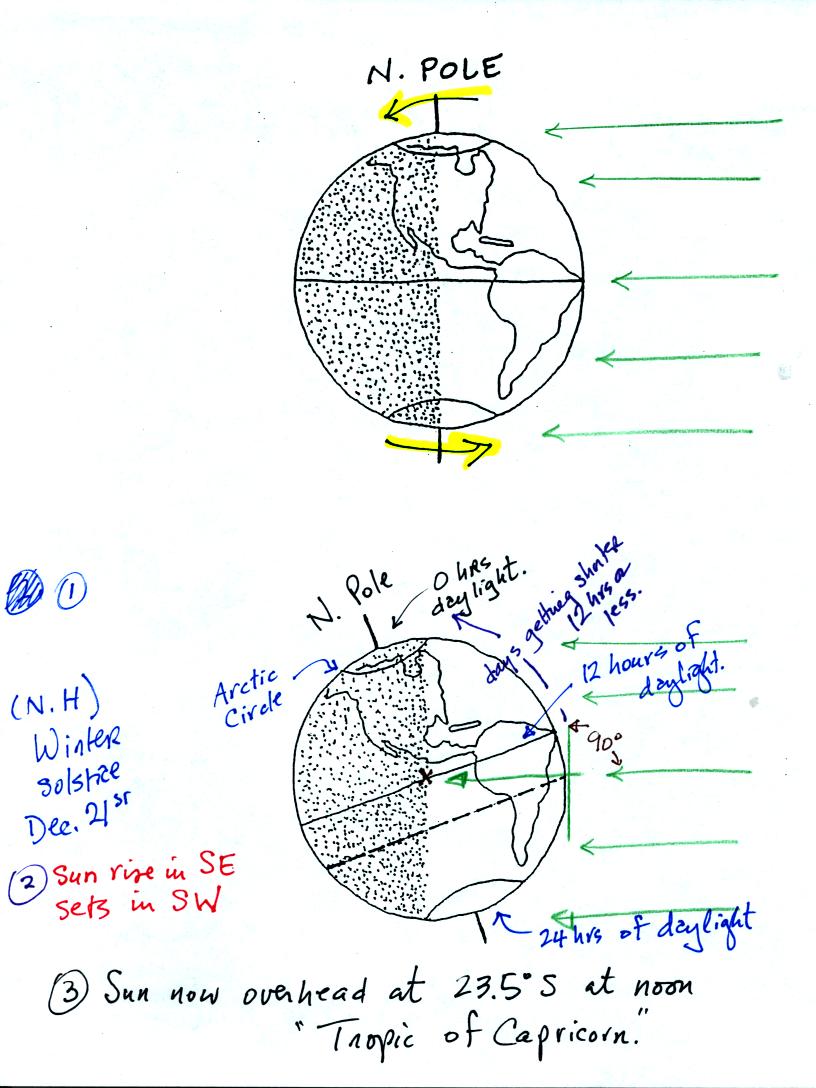
Now imagine rotating the earth from its equinox orientation to the
winter solstice orientation. You can see that rays will strike
the earth perpendicularly at 23.5 degrees S latitude, that is where the
sun will pass overhead at noon.
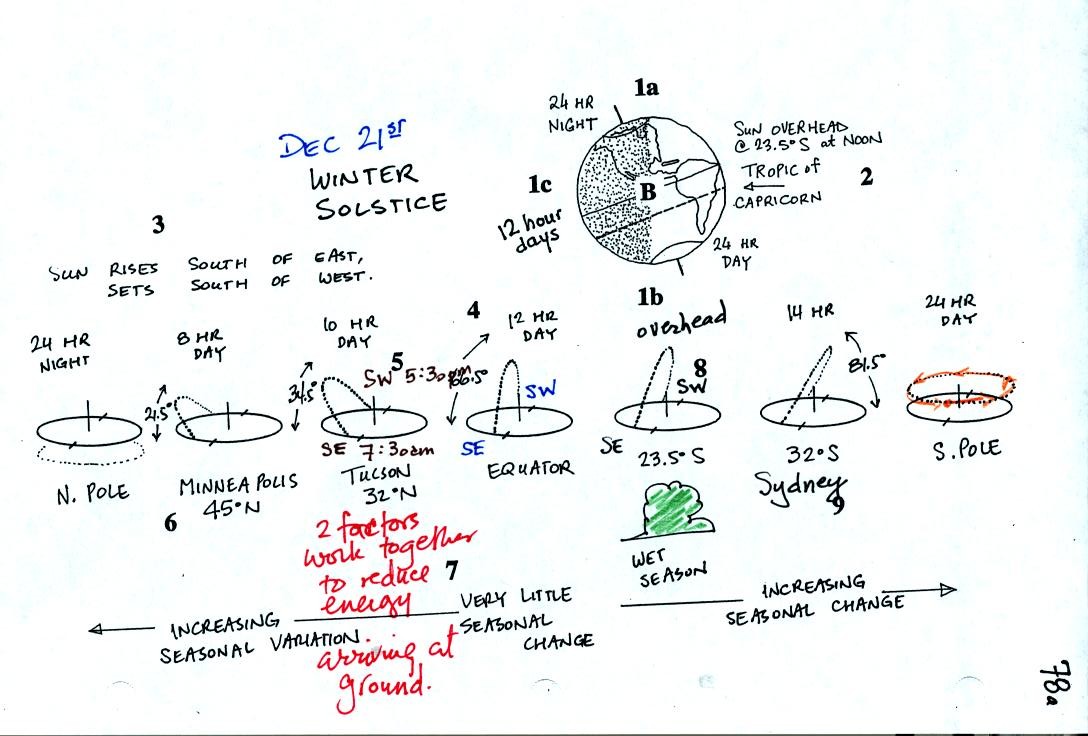
See p. 78b in the photocopied notes for a detailed discussion of each
of the numbered points in this figure.

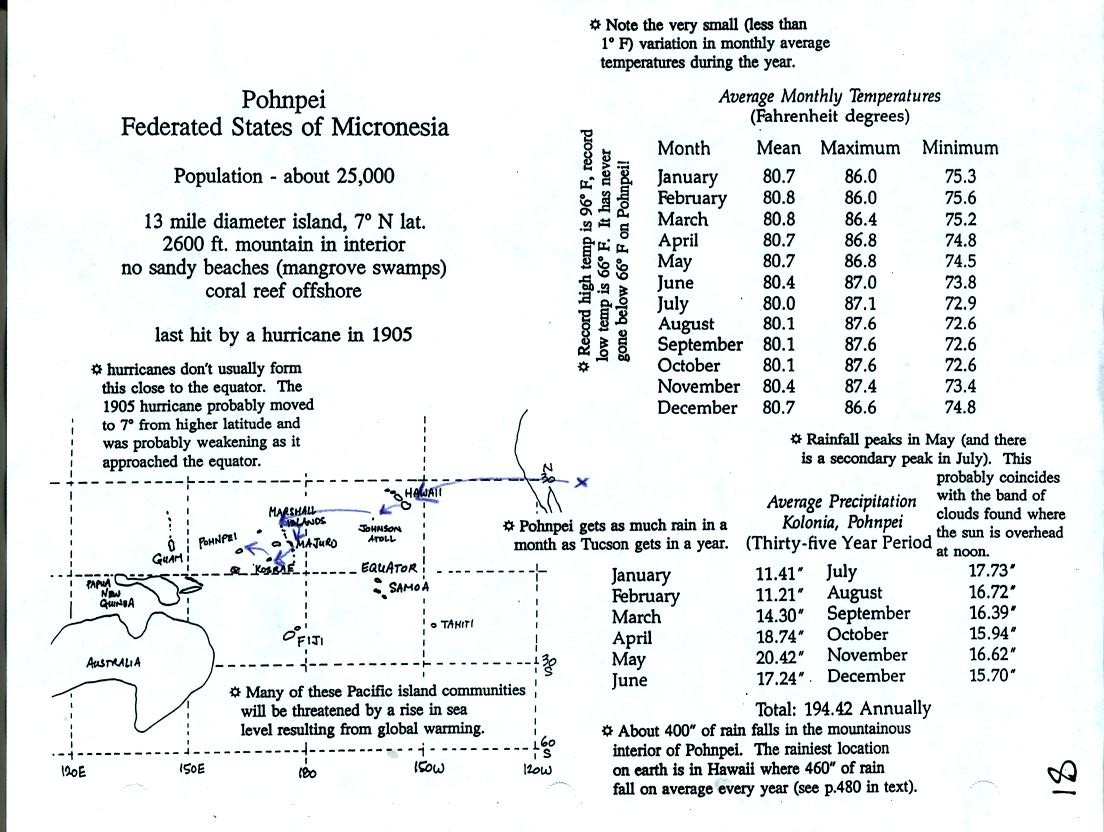
Pohnpei island in the Federated States of Micronesia is located at 7
degrees N latitude in the middle of the Pacific Ocean. The
climate is warm moist and changes very little during the year.
You can see at upper right the monthly average temperatures range from
80.0 F to 80.8 during the year, less than 1 F annual range (the annual
range in Tucson is about 34 F (see pps 82b and 82c in the photocopied
notes). Average annual rainfall in Kolonia, the largest town on
Pohnpei, is close to 200 inches. Some parts of the island get
close to 400 inches of rain per year.
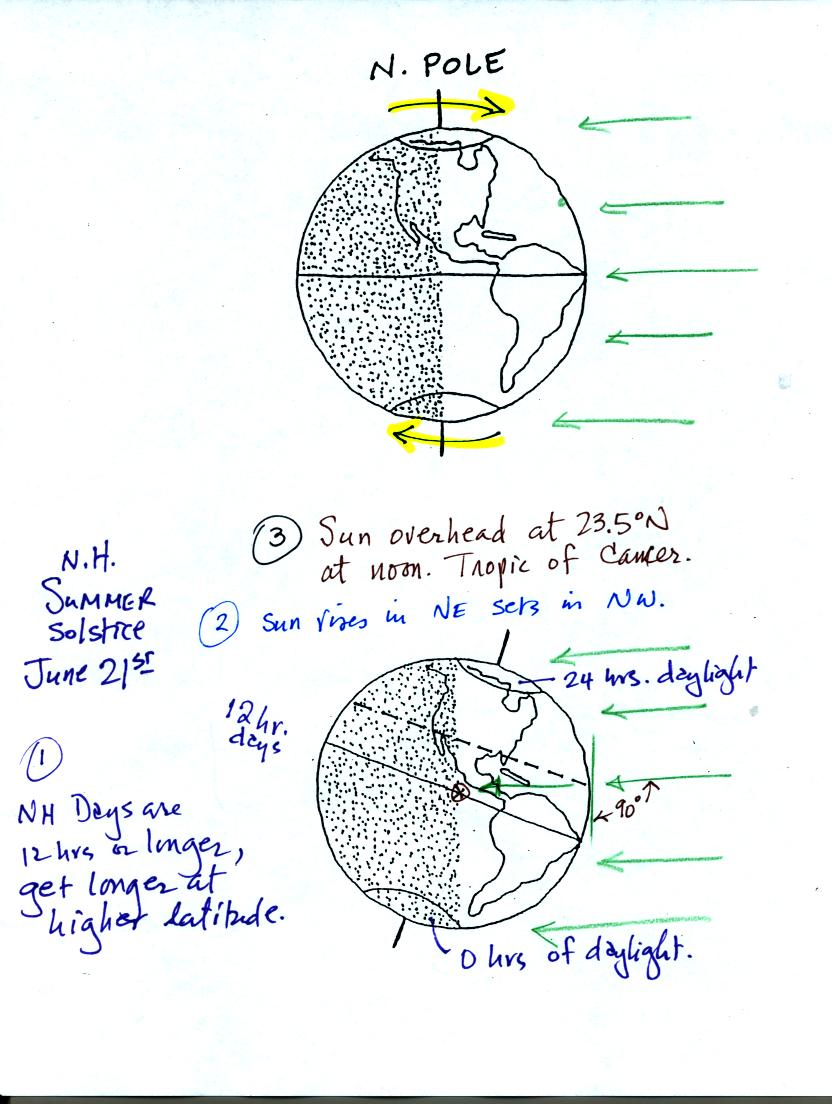
Now we rotate the earth in the opposite direction from its equinox
orientation to the summer solstice orientation. The sun will now
be overhead at 23.5 N latitude at noon.
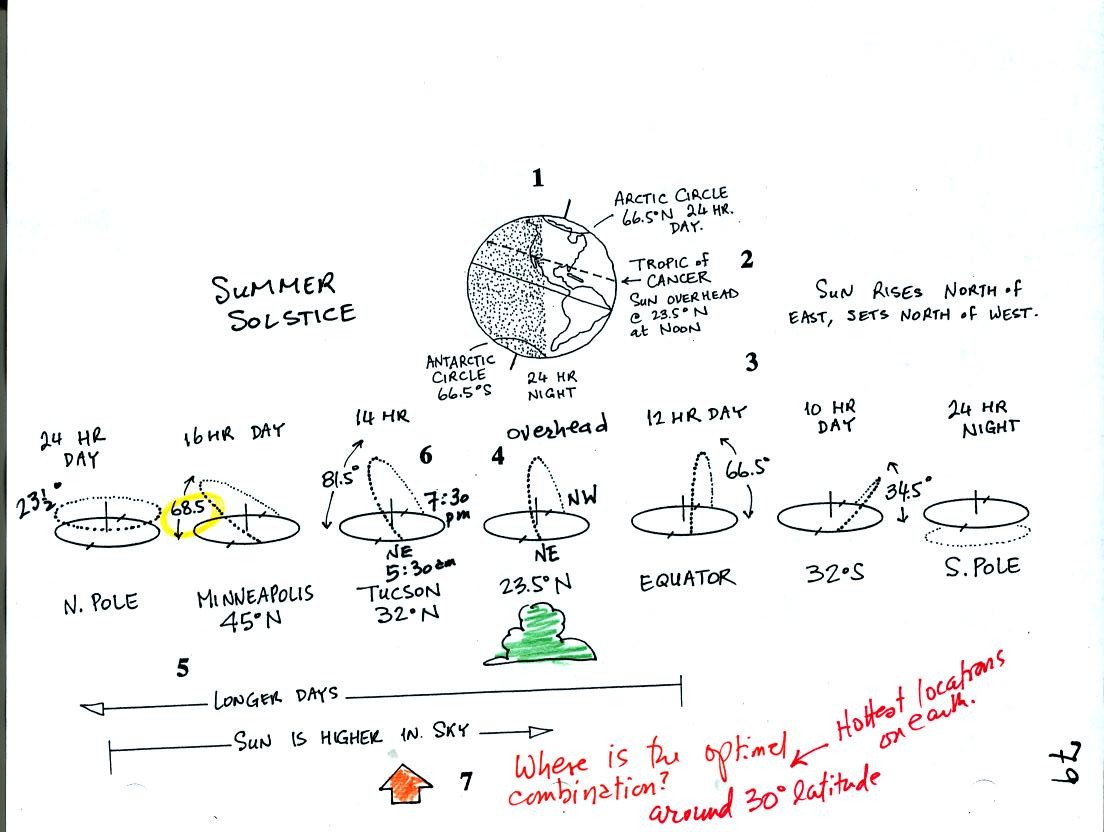
Refer to p. 80 in the photocopied notes for a discussion of the
numbered points. Note in particular that the maximum amount of
sunlight arriving at the ground during the day is found at 30 latitude,
not at the equator or 23.5 degrees latitude.
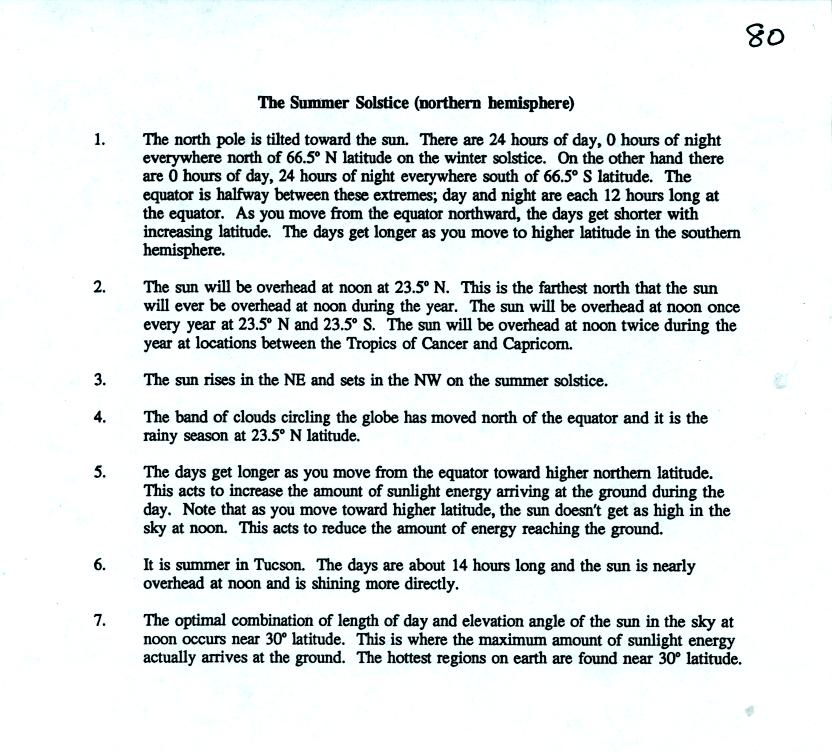
Now we
turn to a completely different topic, scattering of light. Quiz #2 won't have questions about any
of this material.
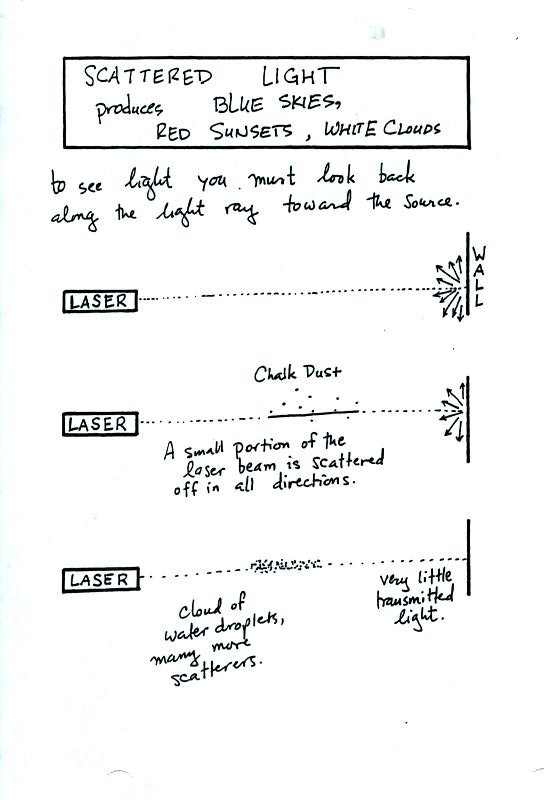
A bright narrow beam of red laser light was shined across the
front of the classroom. If you were to stand at the wall where
the light struck and look back toward the laser (you shouldn't look at
direct laser light) you'd be able to see the red light. Students
in the classroom weren't able to see the light. This is
illustrated in the top portion of the figure below.
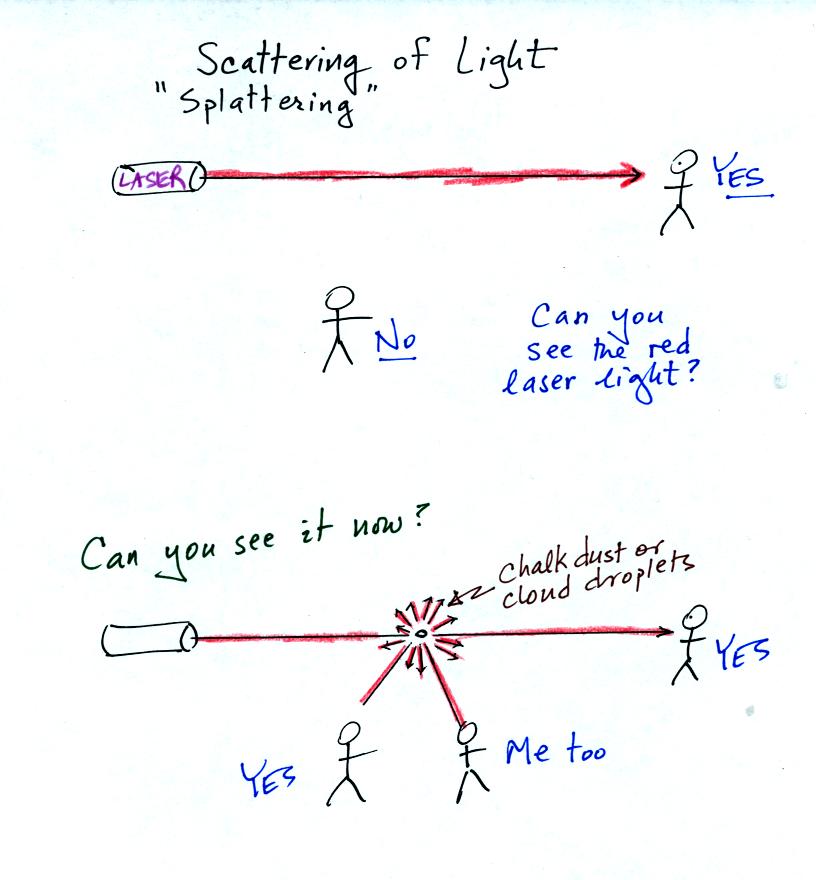
Putting some chalk dust or cloud droplets (very small water droplets)
in the laser beam caused some of the light to be scattered
(redirected). Now students in the classroom were able to see some
of the laser light. Everyone in the room that was able to see red
light was looking back along a different ray of light.
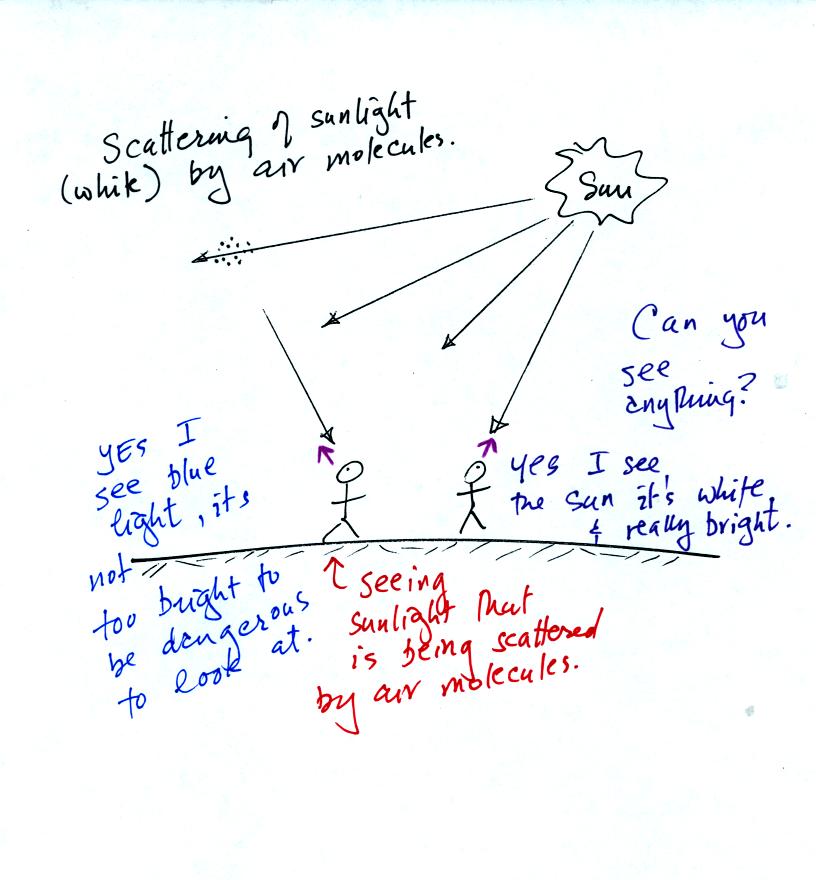
What if you're standing outside looking up at the sky. If you
look at the sun (just as you shouldn't look at direct laser light, you
shouldn't look directly at the sun), you see bright white light.
If you look away from the sun toward the sky you also see light.
You are seeing sunlight that has been scattered by air molecules.
Why is this scattered light blue?
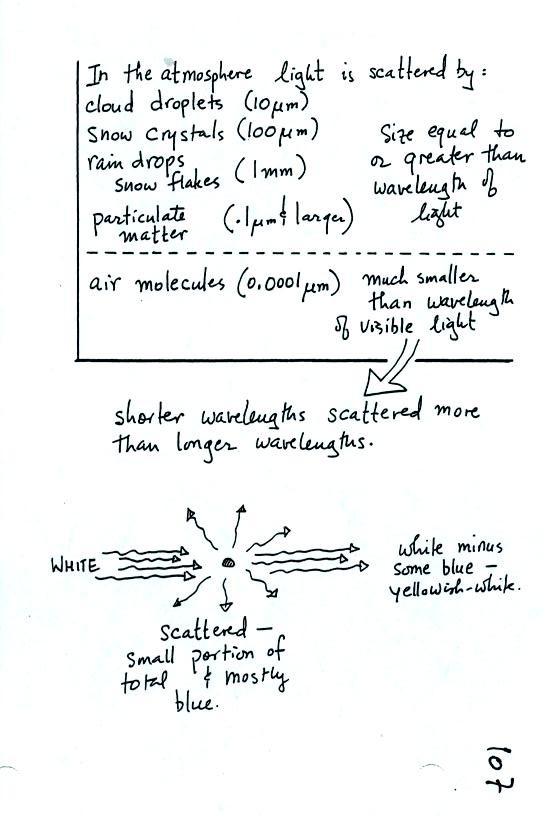
Because they are very small, air molecules scatter shorted wavelengths
of light more readily than the longer wavelengths of light.
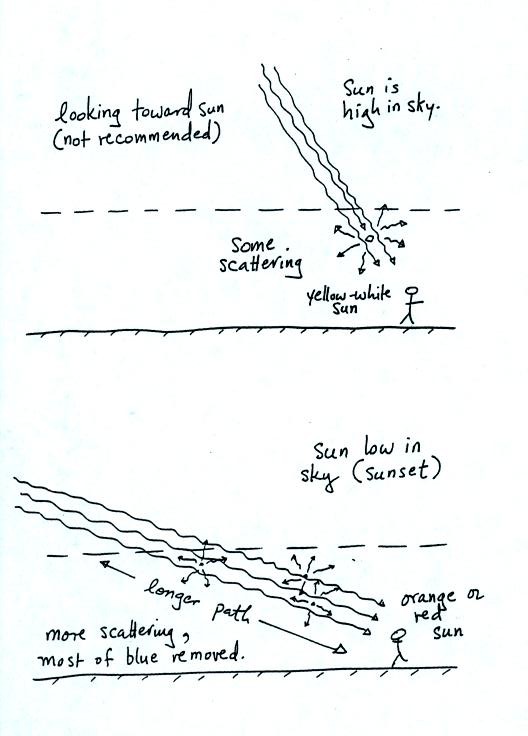
If you look at the sun when it is high in the sky you see bright white
light. If the sun is low in the sky it becomes yellow,
orange, sometimes even red. The sunlight is not as bright as when
it was high in the sky (though it is still too bright to safely look
at).
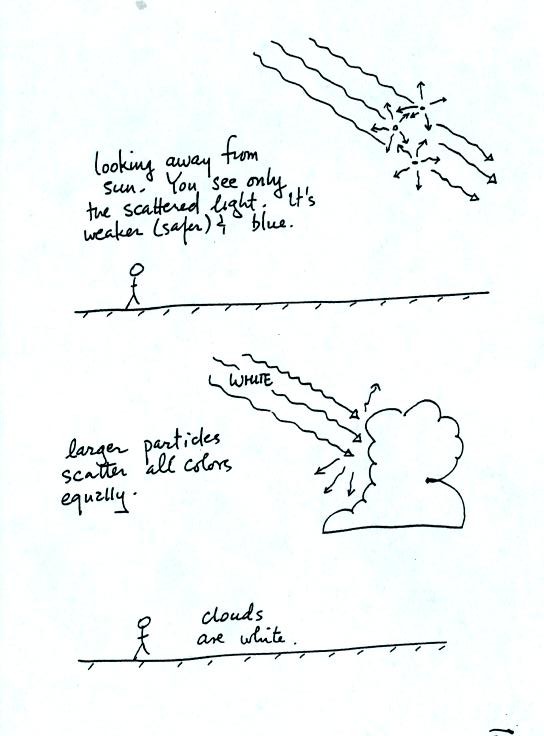
If you look at the sky you see sunlight that has been scattered by air
molecules. It has a blue color and is much less bright. It
is safe to look at this blue scattered sunlight.
The drops of water in a cloud are larger than the wavelength of visible
light. They scatter all the colors more or less equally.
Thus if you shine white light on a cloud the light scattered by the
cloud will also be white.
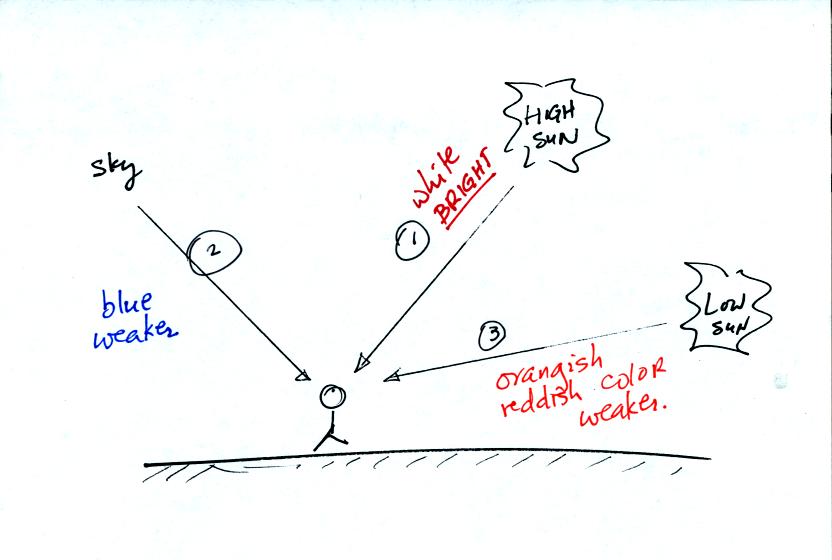
Here's another look at the same material.
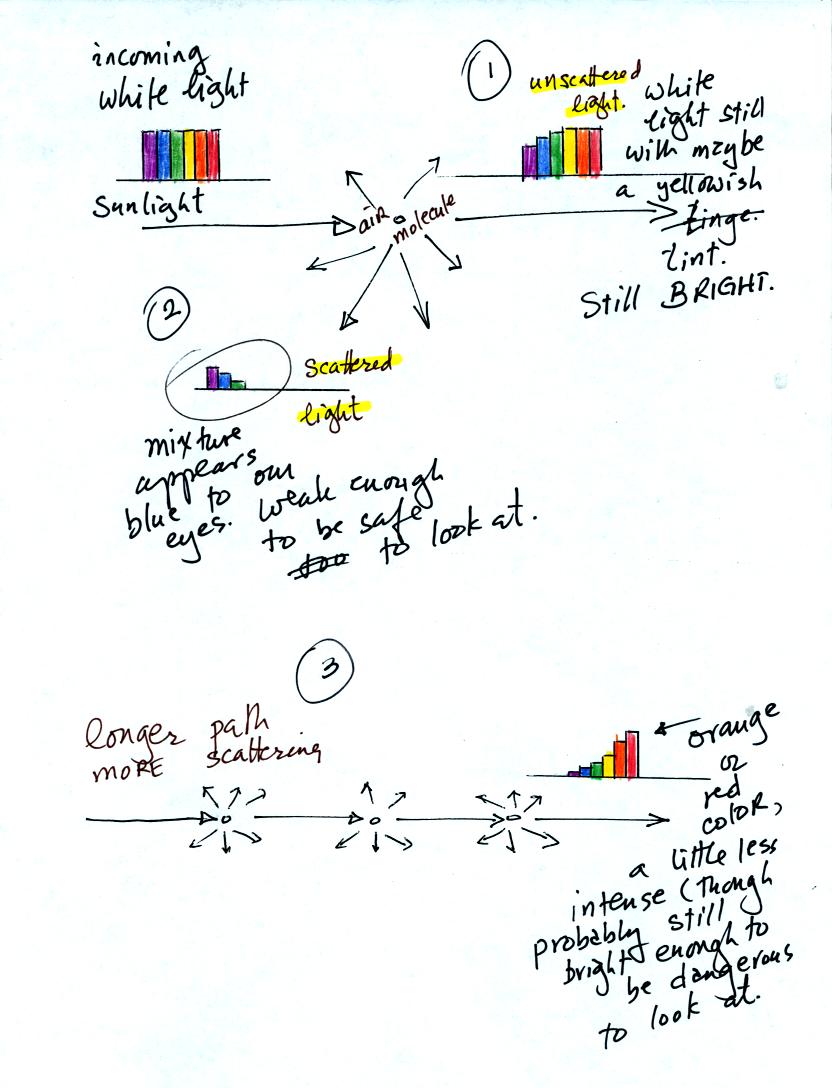
The incident sunlight is white which means it is an equal mix of all
the different colors of visible light.
When you look at the sun when it is high in the sky you see unscattered
light shown in (1) above. Note it is the original equal mix of
colors with a little bit of violet blue and green removed. This
unscattered light is still bright and its color has shifted slightly to
a yellowish white.
When you look at the scattered light you are seeing the small amount of
violet, blue, and green that has been removed from the incoming
sunlight. This scattered light is weaker and has a bluish
tint.
Finally when you look at light coming from a sun that is low in the sky
you see light that has had all of the shorter wavelength removed.
Now the light coming from the sun has an orangish or reddish tint.















